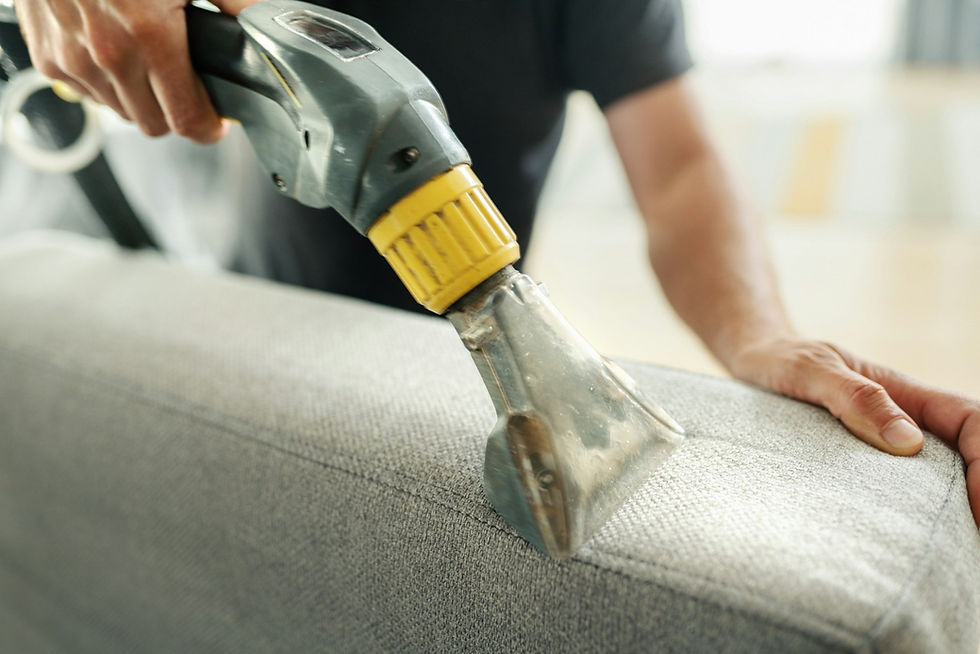Quick Guide to Effective Tile and Grout Cleaning
- mysteamvac
- May 18
- 4 min read
Keeping your home clean and inviting is more than just about dusting and vacuuming. It extends to areas like your tile floors and grout lines, which can dramatically affect the overall appearance of your home. Over time, tiles can lose their luster, and grout can become darkened with dirt and grime. However, maintaining clean tile and grout not only keeps your floors looking fresh but also reduces the risk of mold and bacteria build-up. It's like ensuring your home has that fresh feel every day.
There are several approaches to keeping these surfaces pristine. We'll explore the importance of regular cleaning, share the best techniques for doing the job right, and look into how professional services can make a big difference. Whether you're sprucing up for company or just want a cleaner environment for your family, these tips can help you achieve sparkling results without much hassle.
The Importance of Regular Tile and Grout Cleaning
Regular cleaning of tile and grout is more significant than many might think. Not only does it improve the appearance of your floors, but it also enhances the overall hygiene of your home. Tiles, especially those in high-traffic areas like kitchens and bathrooms, can quickly accumulate dirt. Over time, this allows for mold, mildew, or bacteria to settle in, which isn't just unsightly but can also pose health issues.
Imagine the grout between your tiles as little sponges. They soak up everything from spills to foot traffic residues. When neglected, grout can darken and harden, making it difficult to clean properly later. This can also cause an unpleasant odor over time. Plus, aside from aesthetic reasons, keeping tiles and grout clean helps prevent moisture from seeping underneath, which could eventually damage underlying structures.
Some common issues that emerge from not regularly cleaning these areas include:
- Mold and mildew growth in damp spaces
- Stubborn stains from spills that become set over time
- Gradual weakening of grout lines, leading to potential water damage
By ensuring a regular cleaning schedule, you not only keep your spaces looking their best but also contribute to maintaining the integrity of your home structures. Given the climate in places like Santa Rosa County, where humidity can be high, this practice becomes even more crucial in preventing water-related problems over time.
The Best Techniques for Cleaning Tile and Grout
To achieve spotless tile and grout, adopting the right methods is key. Start by choosing suitable cleaning products. Mild detergents or a mix of baking soda and water work well for routine cleaning. Avoid harsh chemicals that might strip tiles or damage grout lines. For everyday dirt, a microfiber cloth and warm water usually do the trick. Scrub gently to keep tile finishes intact.
When stains are stubborn, consider using lightweight steam mops. These penetrate grout lines without causing damage. Together with a soft-bristled brush, they can lift grime effectively.
Remember, using too much water or letting it pool can weaken grout over time. So, it's best to use damp tools rather than soaking wet ones. Cleaning in small segments prevents water from accumulating and helps maintain a uniform appearance.
How Professional Services Can Help
Sometimes, home cleaning methods aren't enough to tackle deeply embedded dirt or revive tiles' original shine. That's where professional services come to play. Pros use advanced equipment like high-pressure steam cleaners that reach areas regular cleaning can't. They help prolong the life of your flooring and preserve its beauty.
Professional cleaners have the expertise to identify the most suitable treatments for different tile types and grout conditions. They know just how to treat tiles with the care they need, avoiding any guesswork on your part. And if you’re in a place like Santa Rosa County, FL, where the climate might contribute to quicker buildup, this expertise really counts.
Homeowners report that after professional cleanings, tiles and grout often look nearly brand new. You don't just see better results, you also get a service that saves you time and effort. With professionals, not only do you achieve a deeper clean, but you also have peace of mind knowing your floors are in capable hands.
How to Maintain Clean Tile and Grout Between Professional Cleanings
Keeping tiles and grout looking their best between professional cleanings is easy with regular care. Create a routine that focuses on prevention. Here are some simple steps:
- Dry mop or sweep daily to prevent dirt from settling.
- Wipe spills immediately to stop stains from setting in.
- Use door mats to minimize dirt tracked indoors.
- Consider applying a grout sealant every six months to protect against moisture and stains.
A little regular upkeep can go a long way in extending the time between professional cleanings and keeping your floors looking their best.
Wrapping Up
Keeping tile and grout spotless can seem like a lot of work, but with the right approach, it becomes manageable and rewarding. Regular cleaning prevents buildup and stains, while professional services tackle the deep-seated dirt that home methods can't. By combining both, you enjoy beautiful, long-lasting floors.
In Santa Rosa County, where the environment might contribute to grout discoloration, these strategies are particularly beneficial. Embracing regular maintenance, from simple daily tasks to periodic professional attention, helps ensure your home remains a welcoming and pleasant place for everyone.
For those in Santa Rosa County looking for thorough care of their home, consider connecting with Steam Vac's expert team for all your tile and grout cleaning services. Whether you're battling stubborn grout stains or simply wish to maintain the pristine look of your floors, our specialized services ensure a deep clean that keeps your home inviting and healthy. Let Steam Vac handle the hard work, so you can enjoy beautifully clean floors without the stress.




Comments